The photochemical reactor is a processing technology that has only appeared in the past 20 years. It can usually completely mineralize organic matter into simple inorganic substances such as CO2 and H2O within a sufficient reaction time, avoiding secondary pollution. The photochemical reactor is simple, efficient and promising. . The photocatalytic oxidation method using titanium dioxide powder as a catalyst has the problem of catalyst separation and recovery, which affects the application of this technology in practice. Therefore, the photochemical reactor is fixed on some carriers to avoid or make it easier to separate and recover the technology. Has attracted extensive interest from scholars at home and abroad.
1. Research status of photochemical reactor technology
At present, there are two main types of research on photochemical reactors at home and abroad. The first is the non-filled fixed bed type of fixed technology, which directly deposits the catalyst on the inner wall of the photochemical reactor by sintering or deposition method. When the sewage treatment is carried out, the pump is used as the power. The photochemical reactor makes the sewage react with the photocatalysis in the sewage tank The reactor is circulated and refluxed, and the photocatalytic reaction proceeds in the reactor. For example, Zhang Pengyi et al. Studied the photocatalytic degradation of benzoic acids. The fixation method of TiO2 in the photochemical reactor is as follows [1]: Two 120W high-pressure mercury lamps are used to radiate the aluminum plate, and the acidic suspension containing TiO2 powder is continuously circulating After the irradiated aluminum plate, TiO2 in the suspension of the photochemical reactor is deposited on the aluminum plate under the action of ultraviolet light and acidic conditions to form a fixed film. The second is the fixed technology of packed fixed bed type [2]. The photochemical reactor will sinter TiO2 on the surface of the carrier (such as sand, silica gel particles, glass beads, glass fibers, etc.), and then fill the above particles into the reactor. Although this type of fixing technology can increase the contact area of ​​the photocatalyst and the liquid phase (the reaction rate is higher than that of the suspended photoreactor), the photochemical reactor has small carrier particles, and requires a cumbersome separation and recovery process [3 ].
2. Research on Immobilization Technology of Photochemical Reactor
1. Discussion on mechanism
Studies have shown that the photochemical reactor is a catalyst fixing technology similar to the non-filled fixed bed type, that is, the glass fiber arranged on the bottom of the reactor and carrying the TiO2 film is surface modified (supporting certain heavy metals or metals on the TiO2 surface) Oxides, photochemical reactors such as Ag, Au, Pt, Pd, Nb, RuO2 and Pt-RuO2, etc.) can improve the photocatalytic activity of TiO2. Considering that this technology is used for the deep purification of drinking water, low metal content will not work, and high photochemical reactor content will make the heavy metal content in the water exceed the drinking water standard, so the author attempts to improve the adsorption capacity of TiO2 from another perspective To study the problem of catalyst immobilization.
Activated carbon in photochemical reactors has been widely used in water treatment because of its advantages such as large specific surface area, strong adsorption capacity and good hydrophobic properties. The author uses the advantage of activated carbon to improve the photocatalytic degradation performance of the fixed catalyst. The photochemical reactor will fix the TiO2 powder together with the powdered activated carbon on the inner wall of the reaction vessel, and then conduct a deep treatment test on tap water. As a comparison, pure TiO2 was tested at the same time.
For comparison, the photochemical reactor was tested under different process conditions. One is to replace the inner wall of the reactor with kraft paper, fix the catalyst on one side of the kraft paper, and line the inner wall of the reactor with the corresponding size of kraft paper according to the required amount of catalyst. Another type of photochemical reactor is directly tested with TiO2 powder as a catalyst, and the treated water is filtered with a 0.45 μm filter membrane. The test device is shown in Figure 1. The photochemical reactor is made of glass, the size is 6 × 56cm, the volume is 1582cm3, the actual volume (excluding the ultraviolet lamp) is 1287cm3; the power of the quartz ultraviolet germicidal lamp is 20W, the main wavelength of the photochemical reactor It is 253.7nm, and the light intensity E under this test condition is 3.90 × 103μW / cm2; in addition to aeration to promote the suspension of TiO2 in the solution, the air pump also provides air. The actual photochemical reactor uses air. O2 is an oxidant that acts as an electron acceptor, preventing the recombination of electrons and holes.
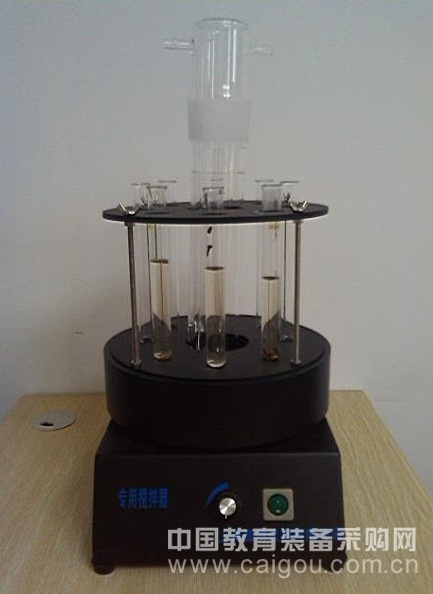

2. Preparation of catalyst membrane
The items required for the photochemical reactor test are as follows: TiO2 (analytical purity); powder activated carbon (sorted with a 140-mesh fine sieve to make it basically consistent with the TiO2 powder particle size); commercially available kraft paper; glass glue; glue gun; scraping rubber plate .
First, apply a thin layer of glass glue on one side of the kraft paper (the purpose is to waterproof). Leave it at room temperature overnight. After the photochemical reactor is dried, apply a thin layer of glass glue on the other side, before it is dry. Sprinkle a certain amount of TiO2 powder or compound photocatalyst mixed with powdered activated carbon on the catalyst as much as possible, press it to make it sticky, and put it at room temperature for one day and night, and after it is dried, weigh the remaining powder, thus Calculate the amount of catalyst in 1cm2 kraft paper.
3. Test results and analysis
For the comparison of photochemical reactors, three types of catalyst membranes were prepared. One was a composite catalyst membrane (TiO2 / C), in which the mass ratio of TiO2 to powdered activated carbon was 3: 7, and the amount of TiO2 used in the experiment was equivalent to 0.6g / L; The other type of photochemical reactor is a pure catalyst film, and the amount of TiO2 used in the test is equivalent to 1.2g / L; the third type is a pure carbon powder film.
From the UVA (ultraviolet absorbance) removal rate, in the first 90 minutes of the photochemical reactor reaction, the TiO2 / C film is superior to the TiO2 film over the simple UV irradiation, but the removal effect of the TiO2 film at 120 min is not as good as the pure UV irradiation. In order to analyze the reasons, two sets of experiments were made. The first set was the change of the removal rate of UVA with the concentration of TiO2 in the removal of organic matter in tap water by the suspended photocatalytic oxidation method of the photochemical reactor. The test results show that the photochemical reactor has the best removal effect when the TiO2 dosage is 2g / L. The second set of experiments is a comparison between TiO2 / C membrane and 1.2g / LTiO2 suspension and 2g / LTiO2 suspension.
The removal effect of the composite catalyst membrane with a TiO2 concentration of only 0.6 g / L in the photochemical reactor is equivalent to the removal effect of a suspension with a TiO2 concentration of 1.2 g / L. It can be seen that the powder activated carbon in the composite catalyst film has good adsorption capacity, and the catalytic performance of the photocatalyst after the photochemical reactor TiO2 is combined with it. It was also found in the test that the TiO2 film doped with powdered activated carbon has strong adhesion to the catalyst, and will not enter the solution during the reaction (the reason is related to the adsorption of carbon powder). The photochemical reactor uses this feature to prepare adhesion A composite catalyst membrane with good catalytic properties. However, compared with curve C in Figure 4, the UVA removal rate of the composite catalyst membrane is far from the removal effect when the optimal TiO2 dosage is reached (the removal rate still differs by nearly 20%). There are three possible reasons to summarize: â‘ The concentration of TiO2 of the composite catalyst membrane used in the photochemical reactor test is 0.6g / L, which is far less than the optimal dosage of titanium dioxide (2g / L); â‘¡The photochemical reactor is in the composite catalyst membrane There must be an optimal ratio between TiO2 and carbon powder, so that both adsorption and catalytic performance can be maximized, and this time only the composite catalyst membrane with TiO2: C of 3: 7 was tested, so this is not sure The ratio is the best ratio; â‘¢ In the preparation process of the catalyst membrane of the photochemical reactor, in order to remove the unattached or unattached powder on the membrane surface, first rinse it under the tap for several times, and then soak it in tap water Overnight, the above-mentioned operation process of the photochemical reactor undoubtedly made the catalyst film doped with powdered activated carbon adsorb some organic matter in tap water. In addition to removing organic matter in the water during the reaction, this part of the adsorbed substance is also degraded. Not counted. Due to the above reasons, the composite catalyst membrane does not achieve the best removal effect when TiO2 is added. However, compared with pure catalyst membranes, composite catalyst membranes still have obvious advantages. If the above problems are solved (such as increasing the amount of composite catalyst membranes) For the amount of catalyst attached, the photochemical reactor chooses an optimal ratio of TiO2 to carbon powder), then the removal effect of the composite catalyst film can achieve the removal effect under the optimal amount of TiO2.
In order to confirm whether the degradation rate of the TiO2 film doped with powdered activated carbon in the photochemical reactor was caused by pure activated carbon, a comparative test was made;
The UVA removal rate of the pure activated carbon film in the photochemical reactor under ultraviolet irradiation is not much different from that of pure ultraviolet irradiation. It can be seen that only when activated carbon is combined with TiO2 can the adsorption and catalytic performance of the two be exerted. The adhesion and removal effect of the TiO2 membrane fixed by the photochemical reactor and the powder activated carbon are better than the pure TiO2 membrane. The photochemical reactor technology has found a more ideal composite catalyst and its engineering application method.
There are a lots of umbrella choices out there for customers today, but few stand the test of time. The majority of umbrella are made using less expensive materials and craftsmanship. At Hyades Umbrella, we build a better umbrella simply durable and reliable. Our premium Golf Umbrella has enough space underneath to fit at least two people or one person with a golf bag. One of our most popular categories in Golf Umbrella is the Windproof Golf Umbrella. It is designed with double canopy for wind ventilation and is manufactured using highly wind resistant engineering.
Whether you are a wholesaler, retailer or small business owner, our well-made quality Golf Umbrella is a great collection to enhance your product range and improve your business.
Golf Umbrella with baseball design

Material and Quality:
Our Golf Umbrella uses 100% polyester or 100% nylon fabric with waterproof, water-repelling coating, Silver UV coating and Teflon coating which is super easy to dry. We have many styles, colors and a large fabric range from which to choose.
To make Golf Umbrella as strong and as wind resistant as it is, our frame is made using high density Fiberglass shaft and ribs in its manufacture. Other materials using are included carbon fiber, aluminum, or steel.

Please contact us for more Golf Umbrella Frame styles.
Comfortable to hold is always the first thing to be noticed with a Golf Umbrella. We have made a wide range of handle designs available, using EVA foam, leather and plastic.
Plastic handle with elastic band
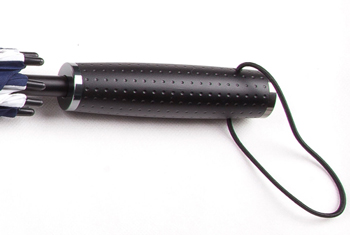
Aluminum handle:
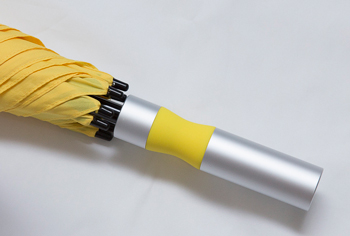
OEM and Order Quantity:
We have been operating as one of the leading high end umbrella manufacturers in the world for over 30 years. We are well known for our OEM work!
We can provide customization for your designs and logo. What a great way to present your company to the world! A prestige product with your own company logo – give your company the class and style it deserves.
Flexible in order volume - orders can be in LCL or full container - MOQ can be discussed accordingly.
Golf Umbrella Type:
Our Golf Umbrella lines include - Windproof Golf Umbrella`s, Auto Open Golf Umbrella's, Folding Golf Umbrella 's, plus Ultra Light Golf Umbrella's. They come in many sizes and weights and of course they all are of exceptional quality and appearance. Our reputation has been built on quality, design and service – all at a competitive price
About us:
Hyades Umbrella Co., Ltd. is a Taiwanese company specializing in manufacturing various upmarket and designer brand umbrellas. Our company's mission is to achieve the highest standard of quality in the field and to go above and beyond our client's expectations.
Our product range from Straight Umbrella , Folding Umbrella , Auto Open And Close Umbrella, through to golf umbrella; from Kids Umbrella ; from Mens Umbrella to Women's Umbrella .
Come rain or shine – you will be ahead of the style game with your Hyades Umbrella – oh yes, people will notice the brand!
Our Umbrella Production:
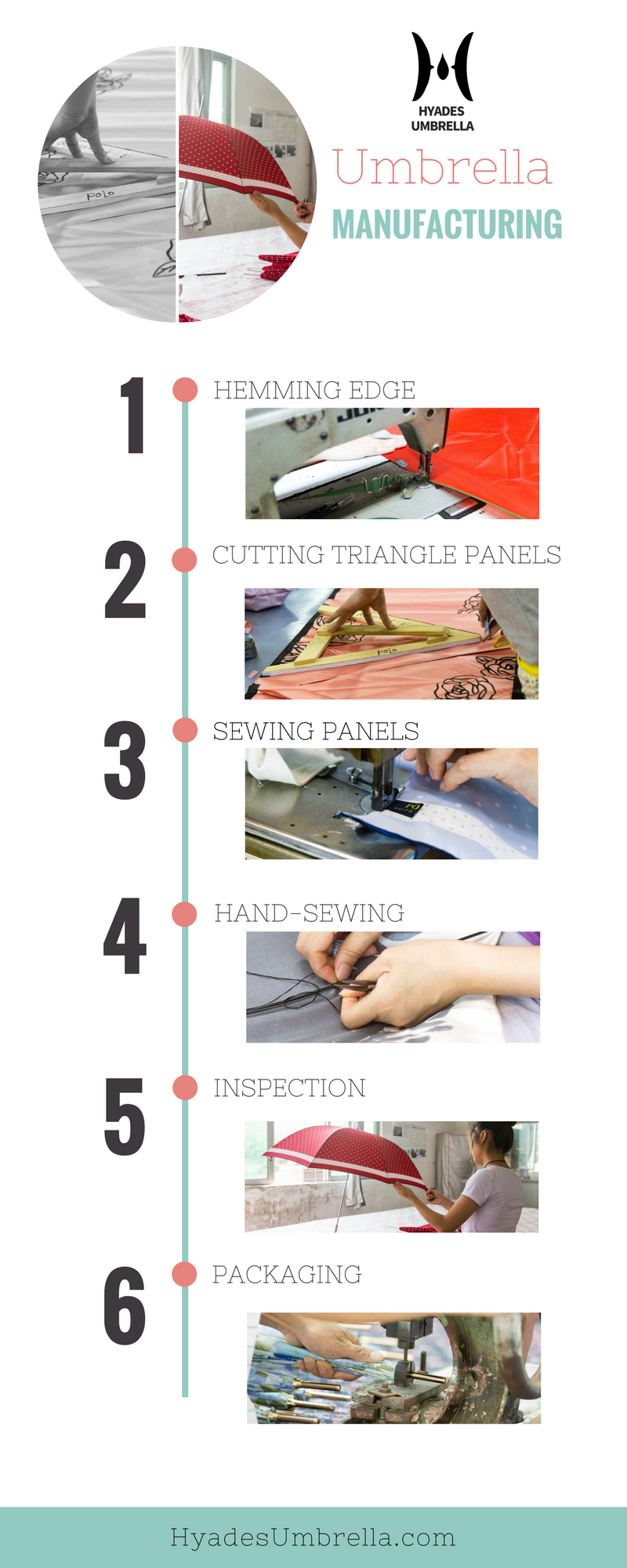
OEM umbrella order procedure:
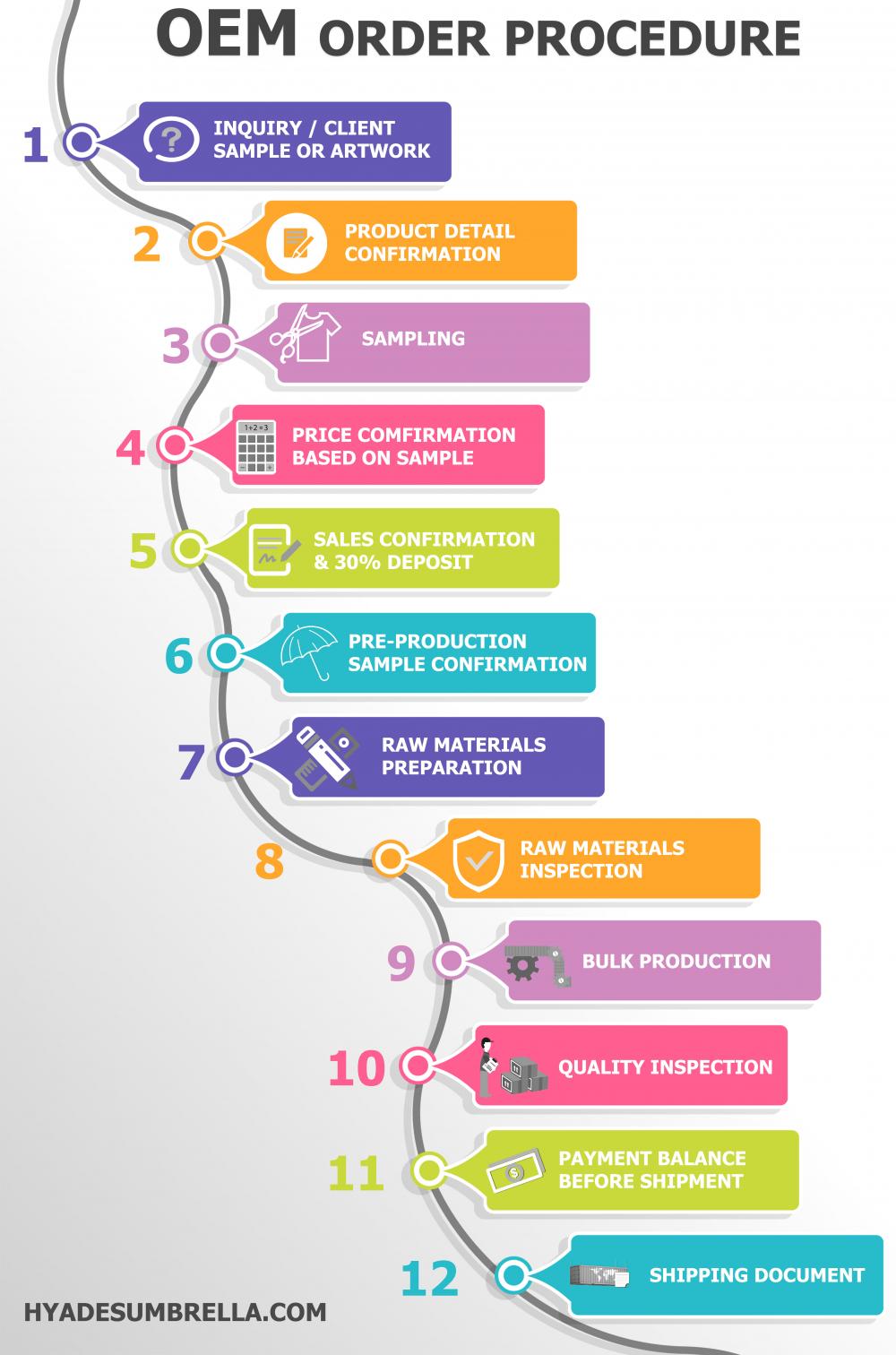
Golf Umbrella
Golf Umbrella,Windproof Golf Umbrella,Auto Open Golf Umbrella,Folding Golf Umbrella
Hyades Umbrella Co., Ltd. , https://www.hyadesumbrella.com